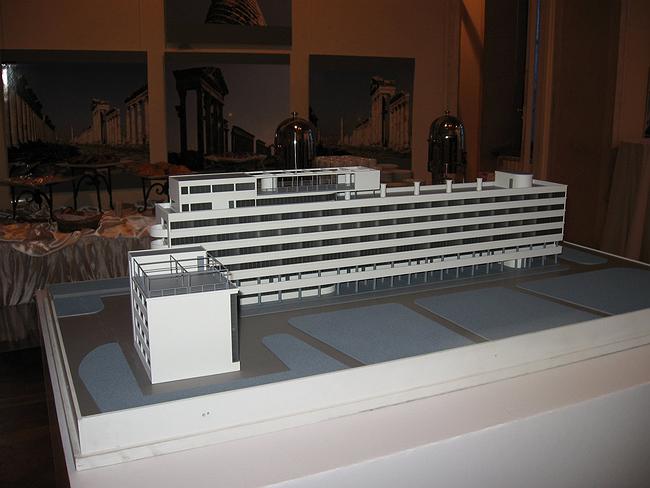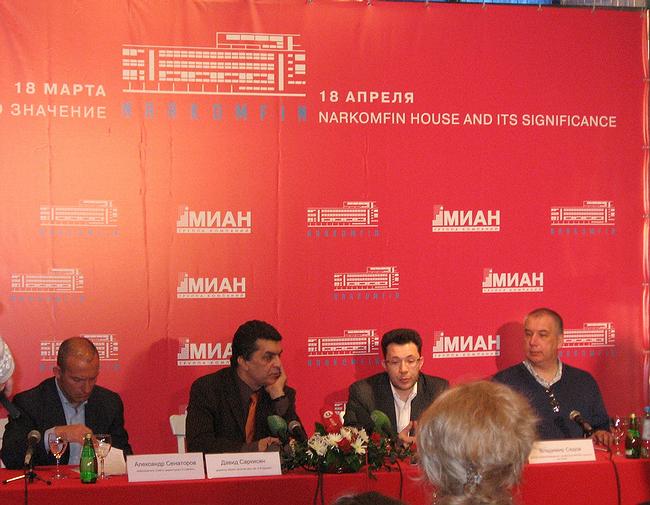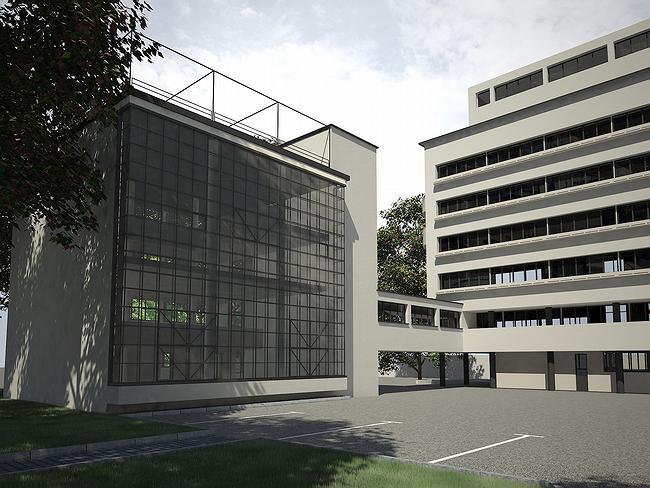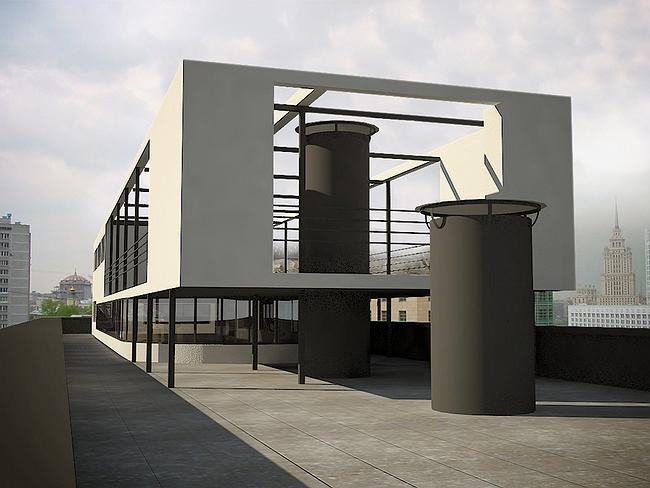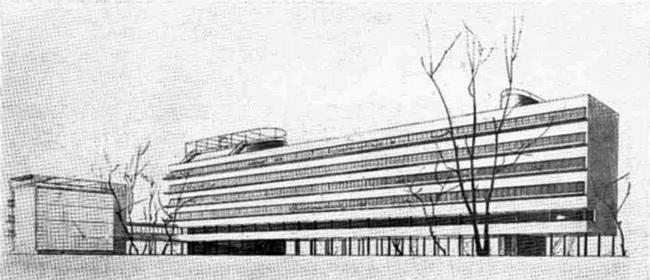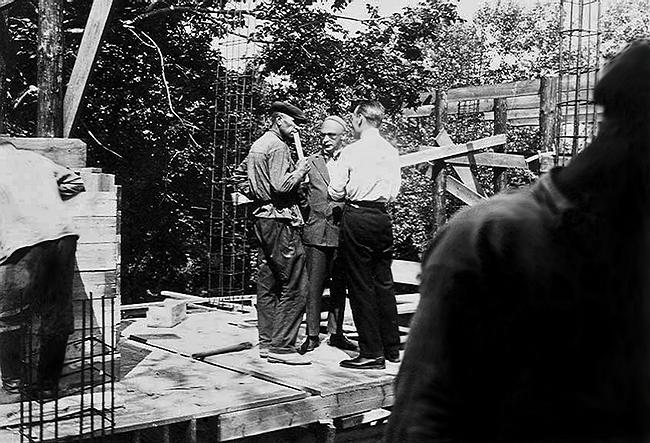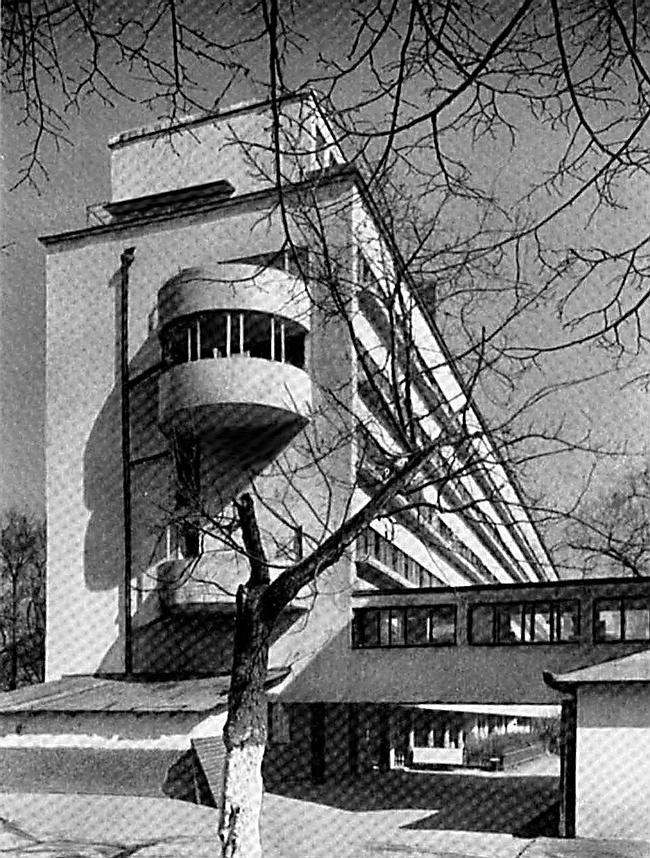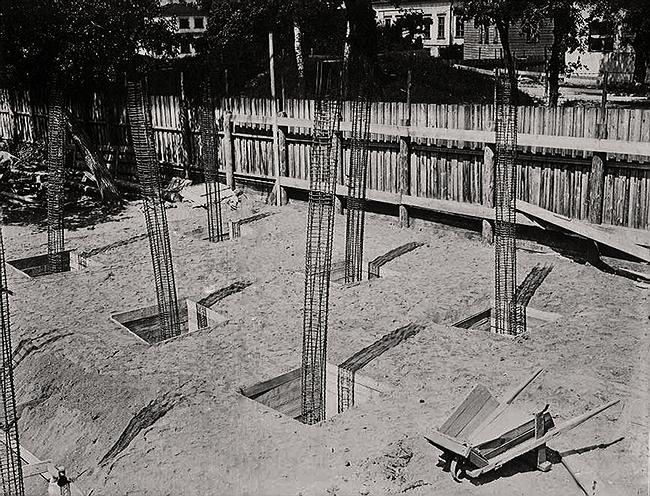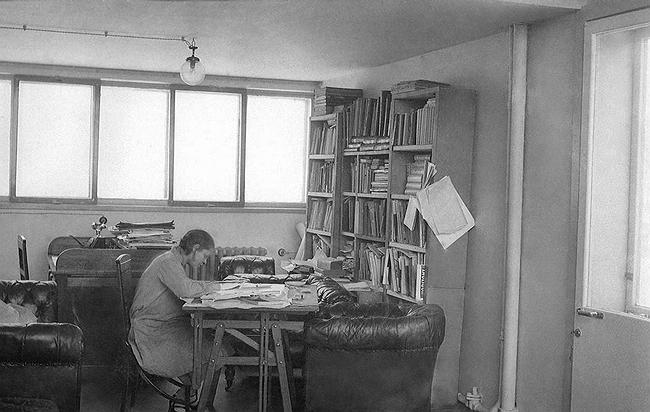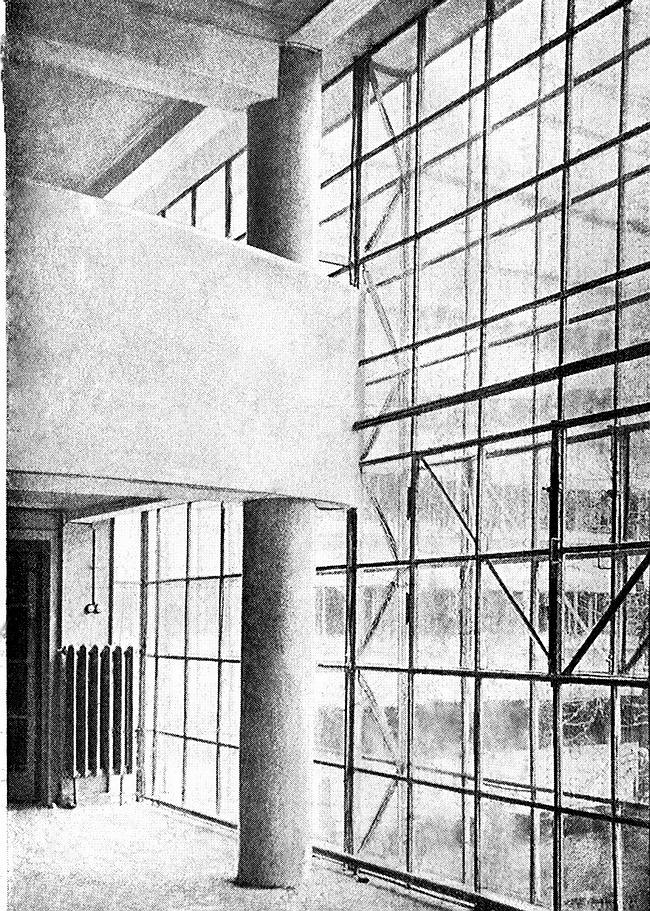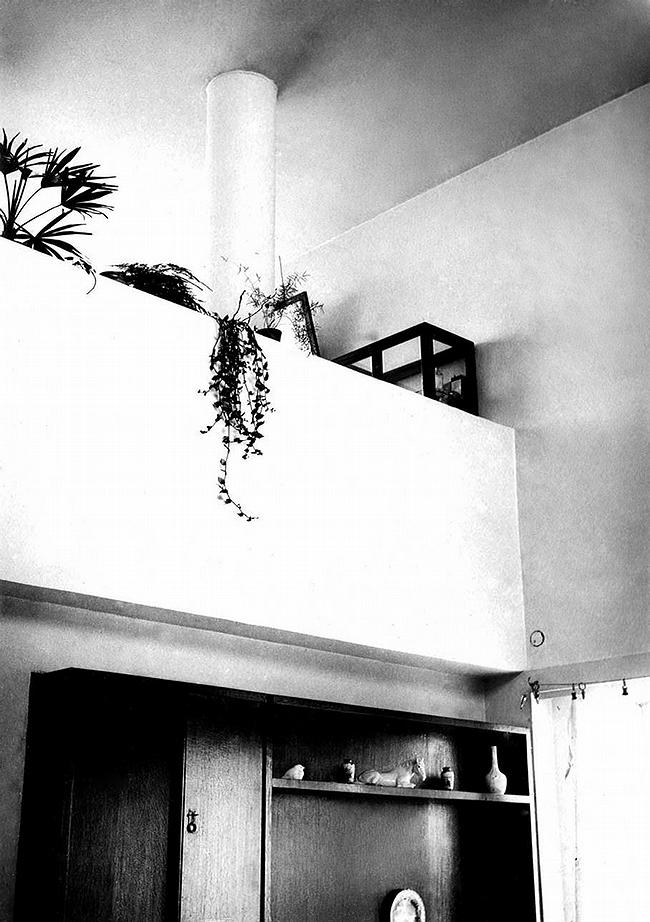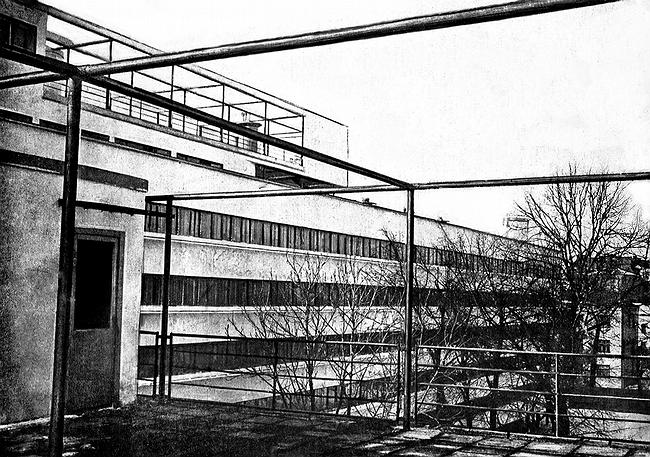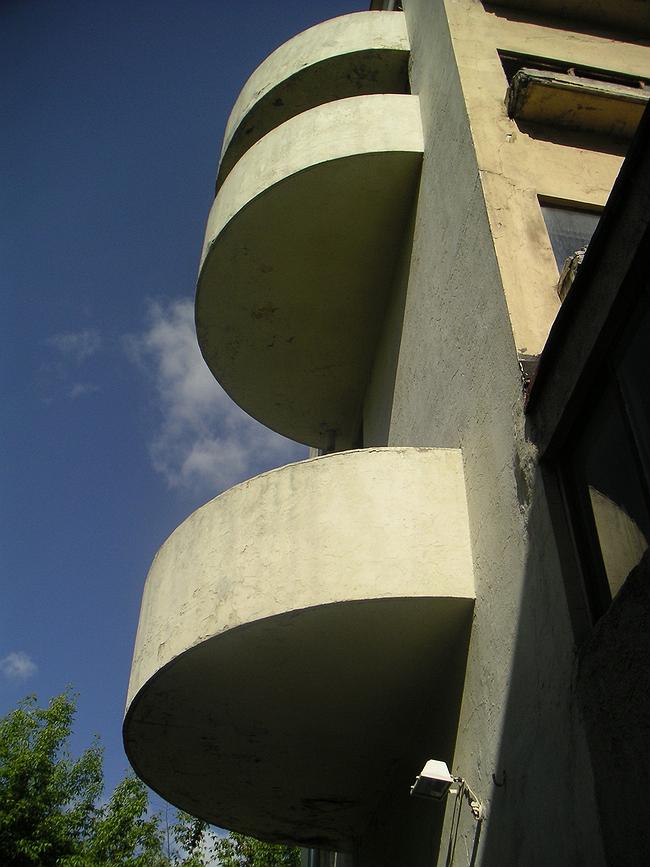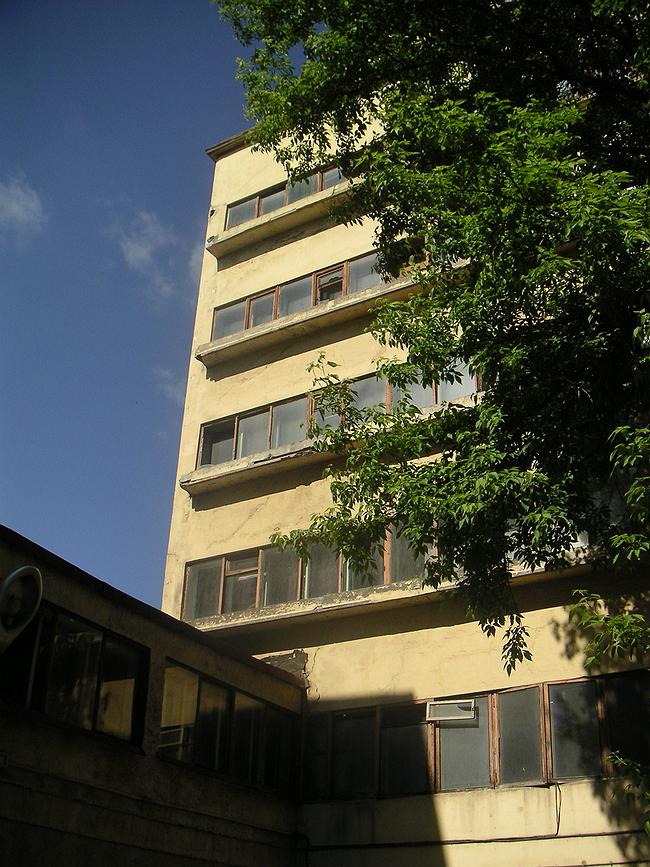After many years of discussions over the vanishing constructivist great work of international level they have come to a compromise: the group of companies “MIAN” will realize the project of restoration of the building, and it will remain a residential building – it will become a boutique-hotel for 40 apartments, and it will recreate the initial idea to a smallest detail, like furniture, color of wall painting, plates and dishes and so on. Fortunately – said Vladimir Sedov, Doctor of Fine Arts – we know almost to one hundred percent how the house looked, so there will not be a place for fantasies. To attract society to such a significant event it was decided to make an exhibition in the Museum of architecture.
It was a long and hard way to the solution of reconstruction. For the city authorities the building has been an eyesore – foreigners have high interest in it, architects arrange excursions there – and they watch how it ruins, what a shame. Paradoxically, it have not been of any value for the city for a long time – it was not marked on the general layout of 1935 at all. Happily the change of stylistic course from avant-garde to Stalin classicism did not mean tragic end for the building, there was a period when the Ginzburg’s building was forgotten – it was not rebuilt and we have it now in its original look, and it have never been repaired, so it is very original (there remain fragments of 80-year-old facing, and very old.
In post-soviet period after the recovery of avant-garde started, there were talks about the building, but there was not preservation. Passive reflection over the picture of the building’s further destruction is partly because it was a problem to decide who would own it – various companies wanted it but had incompatible projects. The absurd situation considering that this is not the first year foreigners beat an alarm, and on application from the Moscow institute of heritage they placed the building of Narkomfin in the list of 100 main buildings of the world that can be ruined, and it has one of the first places.
Fortunately, “MIAN” emerged the time when the house can be still reconstructed – if wait another few years we would lost the monument forever – says Aleksey, the grandson of Moisey Ginzburg who, and this is symbolic, works over the restoration project of the building.
This transformation of the building into the private property is not a tragedy, assured David Sarkisyan, the director of MUAR, since “only having different ways of financing and property we are able today to save historical architectural objects”. Italians – noticed Sarkisyan – still live in Palladian villas and in countless palazzo, but none of them don’t even think to rebuilt something there in order to better their living conditions It is just important there remained a sense that one touches an original thing, original structure after the restoration – stressed Vladimir Sedov – and this is quite possible, there is an example from the Germans – they have renewed the Bauhaus up to a original material and door handles.
The main idea of the exhibition was a wittily noticed parallel between the icon of socialistic housing, which was Ginzburg’s aim, and at the same time a lifestyle of a modern person. From the first sight this is absurd but the mechanism of socialist life, which in 1920’s with difficulty was imposed by constructing buildings-communes with communal house and service block, today is a free choice of wealthy people. That was a genius idea that was even ahead of Le Corbusier. Trying to avoid extremes of forcing into a new lifestyle Moisei Ginzburg introduced these principles in his house quite carefully letting the dwellers make their own choice. By the way that time there were even rougher experiments, like buildings-communes by Nikolaev and Kuzmin, which were described in Ginzburg’s book “Zhilische” [dwelling place]. In those utopian projects, a man had days scheduled to a minute and had no right for any choices, waking up on voice from radio room and fall asleep through sleeping stuff in their “cell”, which was the only private place left. All the rest activities passed collectively – there were no kitchens, sanitary arrangements and other conveniences for individual use.
Nowadays even what did Ginzburg is considered absurdity by some people in terms of communal living, though his variant was very mild – the project was justly called “the house of intermediate type”. Anyway, it is the specifics of living conditions, established in the layout, and that have been the key issue for would-be reconstruction, because if there will be added individual sanitary arrangements and kitchens then there will be lost genuineness of the monument, if there will not be such – who will live there? But it is not right to compare the house to a large communal apartment, paradoxically, it is filled with all “capitalist ideas”: 2level apartments, narkom penthouse and a green house on the roof. And for this layout the best was a hotel which saves the residential function of the building i.e. it’s original function, noticed Alexey Ginzburg.
The both constructions and a passage between them, and also a parking zone will remain in the project. In the main, 8storey building, where Ginzburg planned apartments of different types for different types of families, there will be hotel rooms, reception, hall, a check-room, a store, a lobby-bar. The space of the 4storey communal building will include a meeting room, business-centre, conference-hall, lounge, a restaurant – all of modest sizes because the exclusive “avant-garde attraction” is not for large number of visitors.
There are still continuing the restoration researches, and for Russian restoration specialists the work with avant-garde is unusual so specialist from Germany will help them. “MIAN” will spend about 60 million dollars on the project. Aleksandr Senatorov, the chairman of MIAN’s board of directors, said, the fact is that the monuments of avant-garde can be restorated and make profit; this is a vacant niche, monuments are getting ruined – there is nothing in the world that can be compared to soviet houses-communes, noticed Vladimir Sedov. By 2011 the restoration will be finished so in a few years foreign admirers of avant-garde who used to come and see almost ruined building will have a chance to live and so to say experience all the socialist living conditions.

